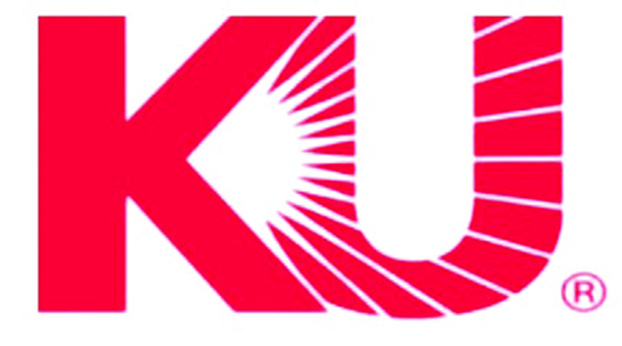KU requesting more than 10% rate increase for customers
Published 4:42 pm Tuesday, November 24, 2020
|
Getting your Trinity Audio player ready...
|
BY ROBIN HART
robin.hart@bluegrassnewsmedia.com
Kentucky Utilities customers will see an increase in their monthly bills by more than 10.5% in 2021 if its rate increase proposal application that was submitted on Wednesday is approved by the Kentucky Public Service Commission.
According to its legal ad published in The Interior Journal last week, the proposed rate increase will increase the company’s annual revenue by 10.4%.
Basic service for residential customers will increase from .53 cents per kilowatt-hour (kWh) to .61 cents. This means that the average residential monthly bill will increase by $12.85 or 10.67%.
Other proposed rate adjustments include:
• Meter test charge from $75 to $79
• Disconnect/reconnect without remote service switch from $28 to $37. There will be no charge to disconnect/reconnect with a remote service switch.
• Rates for one-time and monthly solar share program rider will remain the same at $799 and $5.55 respectively.
KU’s application may be read at any KU office during normal business hours, or at KU’s website at www.lge-ku.com.
Public comments regarding KU’s application for rate adjustments may be submitted to the Public Service Commission, P.O. Box 615 Frankfort, KY 40602; or by email to psc.info@ky.gov. All comments should reference Case No. 2020-00349.
Also, a person may submit a written request for intervention to the Public Service Commission at the above address and must include the status and interest of the party. If the commission does not receive a written request for intervention within 30 days of the publication of the notice, it may take final action on the application.
“Making the decision to request a rate adjustment in this difficult economic period was carefully considered and even delayed two months to help allow more economic recovery. However, for us to continue to provide the service on which our customers rely, we are at a point where we must ask the Kentucky Public Service Commission to review our rates based on the increasing costs to serve our customers,” said Paul Thompson, LG&E and KU President and CEO in a news release.
He added, “In addition to having more economic recovery occur before new rates would go into effect mid-2021, we hope to temper the initial increase in customer bills by also requesting approval of a $53 million ‘Economic Relief Surcredit’ that would help to mitigate the impact of the rate adjustment until mid-2022. Additionally, pending the outcome of this proceeding, it’s our goal not to request another base rate adjustment for several years.”
According to the release, “If approved, taking into account the Economic Relief Surcredit, which provides immediate financial benefit, the impact on residential customer bills would be as follows:
• KU residential customers using an average of 1,120 kWh per month would see an increase of $12.09 in their total monthly electric bill for the first 12 months after the ruling. When the relief credit expires in mid-2022, a KU residential customer using the same amount of energy would see their monthly bill increase approximately 76 cents.
• LG&E residential electric customers using an average of 894 kWh per month would see an increase in their total monthly bill of $8.67 for the first 12 months after the ruling. An LG&E residential customer using the same amount of energy would see the additional monthly increase of $3.07 when the relief credit expires in mid-2022.
• LG&E residential natural gas customers using an average of 54 Ccf per month would see an increase of $5.83 in their total monthly bill for the first 12 months following the ruling, and the additional monthly increase of 34 cents in mid-2022.
Also, to help improve the environment and enable customers to better manage their bills, LG&E and KU are seeking approval for full deployment of advanced metering infrastructure, faster electric vehicle charging stations and an updated net metering tariff, according to the release. The requests include:
• LG&E and KU are asking for an adjustment in what the utilities, and ultimately all customers, must pay for excess energy created by customers with private generation systems. The adjustment will have no impact on current net metering customers for 25 years and will not impact new net metering customers who simply want to generate and offset their energy use with a private generation system.
Only new net metering customers who wish to sell excess energy back to LG&E and KU will be impacted by the change.
• LG&E and KU are asking for permission to deploy advanced meters, also known as smart meters, without asking for an increase in rates due to the installation. Already, as part of a pilot program, 20,000 advanced meters have been installed at the request of customers, and more than 5,000 customers are on a waiting list.
Advanced meters help customers better understand and manage their energy use and provide LG&E and KU information that helps reduce outages.
• LG&E and KU propose adding up to eight additional fast-charging stations that can provide customers with 300 miles of range per hour of charging.
Throughout Kentucky, the utilities already offer 20 public electric vehicle charging stations that charge a vehicle at 12 miles to 60 miles of range per hour. To help alleviate “range anxiety,” While just a first step, it is a key step for infrastructure development for EV deployment in Kentucky, the release state.
With so many customers working and learning remotely, keeping additional groceries in the refrigerator and spending more time at home, customers’ reliance on ‘round-the-clock service – and LG&E and KU’s dedication to deliver – is essential, according to the release.
During the pandemic, LG&E and KU have assisted customers and communities who may have been struggling by suspending late fees, convenience charges and disconnects for non-payment beginning in March; donated to COVID-19 relief efforts throughout Kentucky; encouraged economic recovery; and maintained planned infrastructure and technology enhancements to continue providing safe and reliable service.
“We have worked to mitigate the financial impacts until the economy has a chance to rebound, and we are offering our customers programs to help them manage their bills during this most difficult time,” Thompson said. “I encourage customers having difficulty paying their utility bills to reach out to us to utilize our flexible payment options and be connected to other agencies.
Key to LG&E and KU’s reliability and system resiliency are investments in the utilities’ electric distribution and transmission systems, the release stated. These include upgraded lines; replacing aging wooden poles with steel; new circuit breakers and substation equipment; cycle-based vegetation management; and advanced technology that immediately pinpoints the location of power outages, and in many cases, limits the impacted area and automatically restores service for all other customers.
Reliability on LG&E and KU’s power plants is among the best in the nation as a result of the utilities’ focus on carefully planned maintenance processes and prioritized investment in equipment critical to reliable generation. The utilities’ key reliability measure of unplanned equipment downtime has been reduced or improved by approximately 50% at the utilities’ power plants over the last decade.
In addition, across its natural gas system, LG&E is continuing to replace aging steel gas lines; making upgrades to compressor stations and underground storage facilities; and following comprehensive safety protocols that include using in-line inspection tools, robotic sensors and leak detection surveys.
According to KU, Despite rising costs for cybersecurity and outside labor, and the investments in the utilities’ systems, LG&E and KU will continue to deliver rates that are among the lowest in the nation. The utilities are ranked in the top quartile of peer companies for holding down costs. As a result, LG&E and KU have maintained residential rates well below the national average. LG&E’s rates are 17% lower than the national average, while KU’s rates are 22% below the national average.






